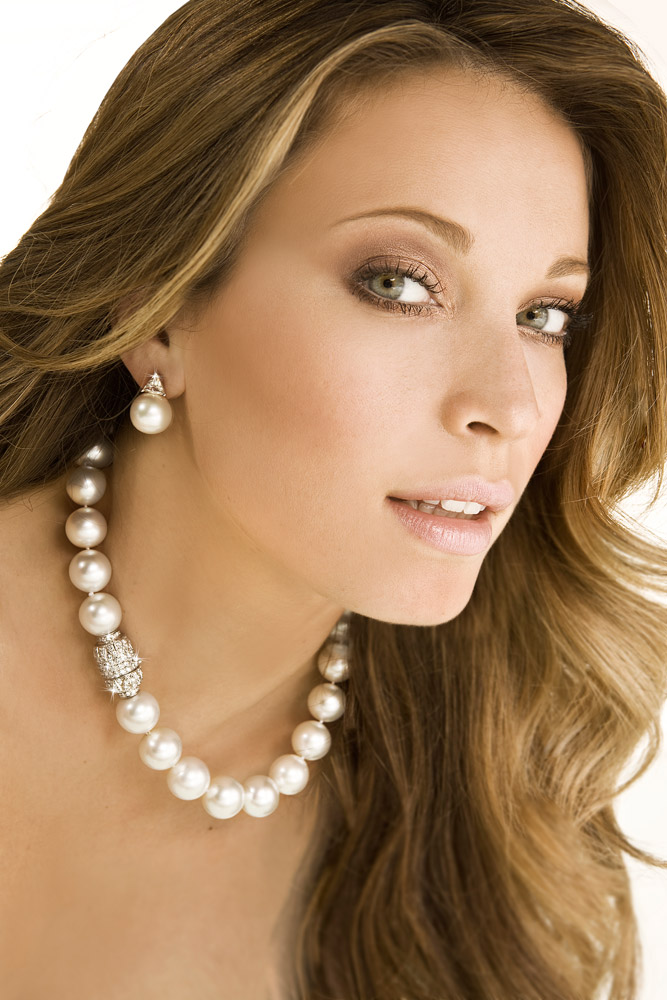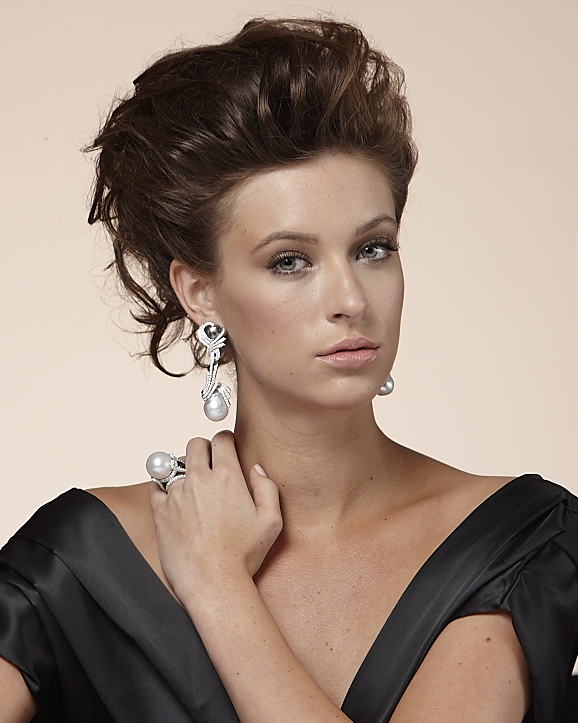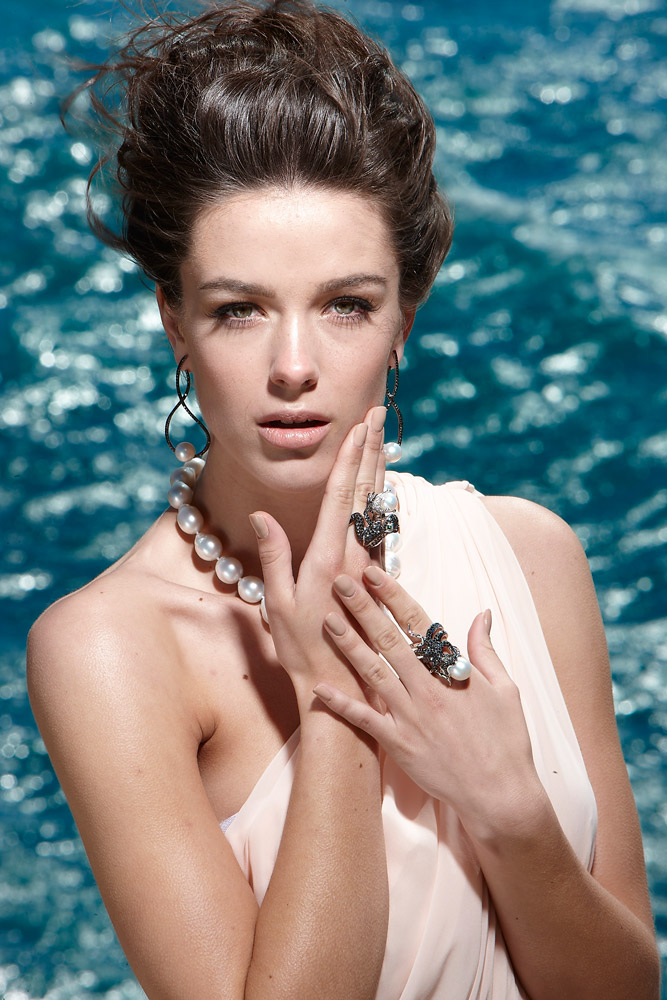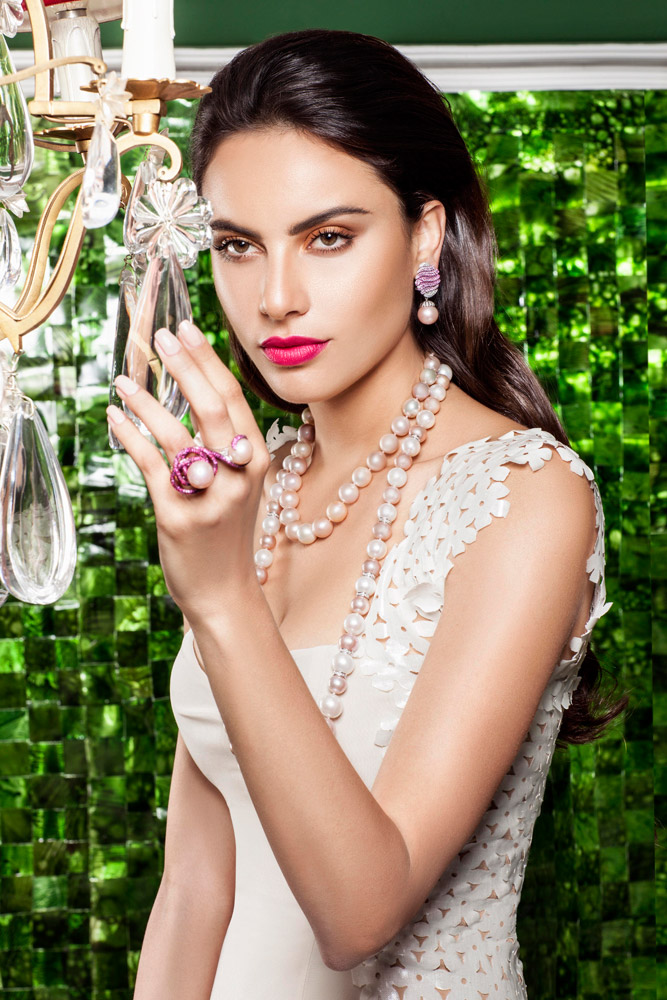Introduction to Akoya Pearls
Cultured akoya pearls are what most envision when they think of a strand of cultured pearls. White, round and lustrous, akoya pearls are the classic cultured pearls, revered for more than 100 years. The finest strands emanate a glow rarely found in other cultured pearl varieties, which is one reason akoya pearls are still considered the gold standard in cultured pearl jewelry.
Brought home by GIs after World War II for their wives and girlfriends, the classic white akoya pearl necklace became a mainstay in popular culture and has remained a staple for the jewelry box ever since.
Long known as the cultured pearl, saltwater akoya pearls are famous for being white, round and highly lustrous. They’re available in a small but versatile range of sizes, typically five to ten millimeters in diameter.
Pearl Farms in Japan
Mikimoto first began farming akoya pearls in the Mie Prefecture, and akoya pearl farms still operate there. But Japan is blessed with numerous other suitable locations as well. Pearl farms are found south of Mie to Shikoku, continuing as far south as Kyushu Island.
Mie Prefecture is located more than 700 kilometers southwest of Fukushima, so the devastation caused by the 2011 tsunami had no adverse effects on the pearl industry.
The farms are typically situated in small, protected lagoons and bays with freshwater estuaries. The influx of fresh water helps lower salinity, which increases the viability of plankton. Plankton is the food akoya pearl mollusks need to survive. The protected areas help shield farms from destructive natural elements such as typhoons. But freshwater runoff from storms can lower salinity to levels unable to support mollusks. So, the bays must also be deep enough that farmers can lower the shells to more saline depths when required.
Pearl farmers lease their land from the government. These leases are usually passed from generation to generation. Most present-day pearl farmers operate a family business that was founded by their grandfather or great-grandfather.
Pearl farming is a perilous business. Many farms have been decimated by tropical storms, and the dreaded “akashio” or red tide, a toxic algae bloom deadly to mollusks, is always a threat. Even market fluctuations have an impact, as nurturing baby oysters to harvesting their pearls takes several years.
Shape
- While baroque akoya pearls do exist, classic akoya pearls are round.
- Pearls that roll equally in all directions are called “eight-way rollers.”
- You can test your pearls’ perfectly round shapes by rolling one-inch sections of the strand in front of you.
Overtones
Overtones are the secondary colors that appear subtly over the body colors of cultured pearls. Akoya pearls predominately exhibit white body color with rosé (top), cream (middle) or silver (bottom) overtones. Each overtone has a unique appeal that can be romanced.
- Showcase pearls’ overtones against plain a white backdrop.
- Avoid displaying pearls in direct sunlight as this will wash them out, making them appear dull.
- Rosé can range from pale pink to deeper, more saturated hues. This overtone deepens and enhances the pearl’s luster.
- Pairing these pearls with yellow gold will maximize this effect, making the pearls appear highly lustrous.
- Silver overtones may contain undertones of green or blue, giving these pearls an ethereal look.
- This overtone pairs equally well with both white and yellow gold.
- Silver overtones are best suited for women with dark hair and tan or olive complexions. The contrast tends to “pop” and the pearls appear larger.
- Cream, like rosé, enhances and deepens the pearl’s luster; the effect can be maximized by pairing the pearls with yellow gold.
- The finest cream overtones display flashes of violet, combining pink and blue to dazzling effect.
In the image above, notice how the akoya pearls with rosé overtones appear to have more depth. Still, many of your customers will ask for silver, as this overtone is closest to a bright white.
Luster
Luster is the quantity and quality of light reflected from the surface or just under the surface of a pearl. The most valuable akoya pearls mirror recognizable objects and light reflections will appear crisp and sharply defined.
The image above illustrates why it is a good practice to keep a low luster strand of pearls on hand for comparison purposes. The stark contrast will convey why pearls with excellent luster are more valuable. The distinct blurring of reflected light sources and low reflectivity are easy to see.
- Excellent luster displays sharp, crisply defined reflected light sources on the surface, and recognizable facial features will be visible on the pearl’s surface.
- Good luster will display sharply defined light sources reflected on the surface, but you will notice some slight blurring or softening of the edges. You can still discern your face reflected in the surface, although not all details.
- Low luster pearls will show distinctly soft edges of reflected light. Objects will not be visible in surface reflection or be very blurred.
Size
Akoya pearls range in size from one to eleven millimeters in diameter. Most akoya pearls fall between five and nine millimeters.
- The most popular size range falls between are seven and nine millimeters. These sizes are small enough for daily wear and look proportionate on most women.
- The smallest sizes, such as five millimeters, are best suited for young girls under sixteen as a “first set of pearls.” For most women, this size can be underwhelming.
- When all other quality factors are equal, the larger the pearl, the more valuable it is. There is an exception to this rule when dealing with rare small sizes, such as 3 mm and 4 mm.
- Less than 25 percent of any pearl harvest is fine enough for jewelry. Of that, only one percent is larger than nine millimeters and considered fine grade.
Blemishing
Nearly all cultured pearls will exhibit some form of blemishing whether immediately visible or not. They are, after all, created by mother nature with only assistance from humans. Visible blemishes and imperfections can be a selling point. They show the organic nature of the gem and can be described as “natural fingerprints” or “nature’s kiss marks.”
- Inclusions distinguish genuine cultured pearls from man-made imitation beads. High quality imitation pearls such as Majorca will typically display perfect surfaces with no blemishes.
- When all other factors are equal, the fewer blemishes, the more valuable the pearl. All cultured pearls exhibit blemishes, even if not visible to the naked eye. For this reason the FTC has mandated that cultured pearls never be described as “flawless.”
- Mottling is not technically considered a surface blemish and is often indicative of thick nacre. It is caused by irregular nacre layering under the surface of the pearl.
- Flat spots are commonly found on smaller pearls
- Flat spots are typically only visible upon up-close inspection because of their small size.
- Blinking is a visual phenomenon that appears when a pearl’s nacre is too thin. Striations on the mother-of-pearl bead nucleus become visible when spinning sections of a strand in front of a strong light source.
- Pearls with thin nacre not only tend to have lower luster, they are easily damaged. The nacre may peel away revealing the nucleus below and they often chip when drilled.
The akoya pearl’s timeless beauty and subtle, elegant grace will always be sought by customers new to pearls and connoisseurs alike. Knowing the pearl’s background and value factors will enable you to show off your knowledge of these gems and will help form long-lasting relationships with any client that walks into your store.





